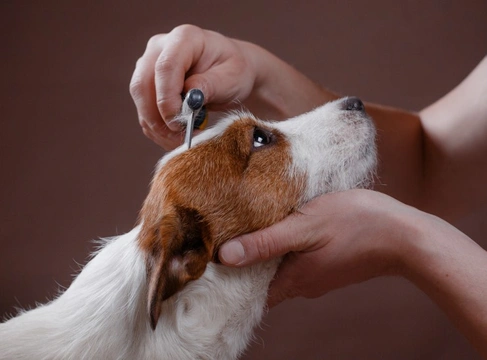
Seven good reasons to brush your dog regularly
While some dogs’ fur and coats would be virtually unmanageable if they were not brushed several times a week and taken to the groomers for a bath and clip or trim every few weeks as well, other dogs do not technically need to be brushed due to their short, fine fur that does not get tangled or knotted up. However, whether your dog falls into the former or latter category or somewhere in between, there are a whole range of good reasons for brushing your dog regularly, whether they appear to really need it or not!
Even hairless or partially hairless dogs such as the Chinese Crested hairless variant can benefit from brushing, although the type of tools that you would use for this are apt to be rather different than for a furry dog!
For some people and their dogs, a bad approach or prior bad experiences may make the dog difficult to brush, which can of course be very off-putting and lead to the decision to not brush the dog regularly at all. However, getting past any problems (or avoiding creating them in the first place) so that you can brush your dog regularly will provide a wide range of tangible benefits over time, for both you and your dog!
In this article, we will share seven good reasons to brush your dog regularly, even if they have short, fine fur that takes care of itself. Read on to learn more.
Stimulate the fur growth
If your dog is very hairy, sheds a lot or needs to be trimmed into shape regularly, stimulating the fur growth might seem like the last thing you would want to do! However, while it might seem counter-intuitive, brushing your dog with the right kind of tools stimulates the new, healthy fur growth that can help to achieve a shiny coat that does not shed as heavily and that looks and feels much better in texture and condition.
Boost circulation
When brushing your dog, it is important to get right down to the skin and stimulate the skin as well as the coat. This may mean using more than one type of brush-one to comb out the top layers and another that gets down to the skin without being too sharp or rough.
Brushing the lower layers of the coat and the skin is essentially like having a massage for your dog, and stimulating the skin in this way helps to boost the circulation to the very top layers of the skin, where the follicles that grow hair are located. This helps to once again achieve healthy new hair growth, and keep your dog’s skin soft and supple.
Remove loose hair
One of the main reasons for brushing your dog is of course to remove loose and shed hair, before it gets the chance to spread all over the home and work its way into your carpet and furniture. However, brushing to remove loose hair also helps your dog too-having a shedding coat can be rather irritating and even itchy for your dog, and they will not be at their best if you do not help them to shed the fur that they no longer need!
Avoid and remove knots and matts
Dogs whose hair grows to longer than an inch or so need special vigilance in terms of keeping an eye out for knots and matts forming in the fur, and these are invariably more challenging to remove than they are to prevent by brushing regularly and ensuring that you get right down to the skin!
Pay special attention to problem areas such as under the belly and in the armpits, and you should be able to prevent knots and tangles from getting a grip or prevent them entirely.
Get a head start on parasites
Most dog owners understand the importance of treating their dogs for fleas and other parasites regularly, but not all dog owners actually take the time to pick through the coat to check to see if anything’s jumping, because we do of course rely on the products that we pay for doing their job!
However, if you do brush or comb your dog’s coat every few days, you will soon spot anything creeping or crawling in the coat, you will immediately be able to get on top of it and treat the dog or change your products before biting bugs start to make your dog’s life a misery.
Quickly spot any problems
It is a good idea to check your dog’s body over regularly to check for problems, and simply running your hands over their legs and body each day when you come back from a walk is a good way to fit this into your routine. Brushing your dog every few days also gives you a chance to check for problems, such as scabs, lumps and bumps, ticks, or anything out of the norm that may need further investigation.
Improve your bond with your dog
Finally, anything that you do with your dog on a one to one basis will to improve the bond between you, particularly if it becomes part of your regular routine and something that you both look forwards to!



